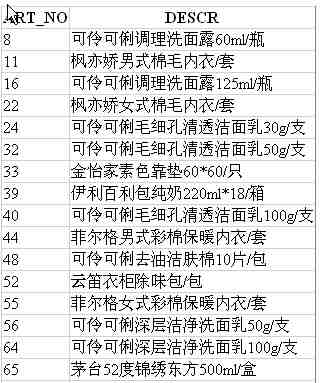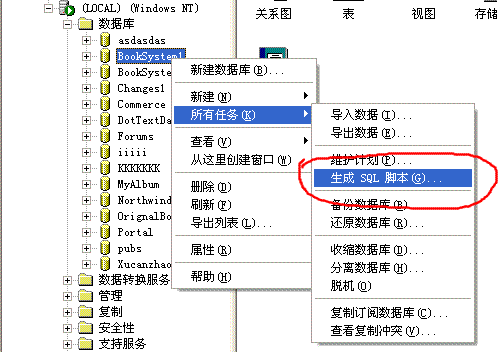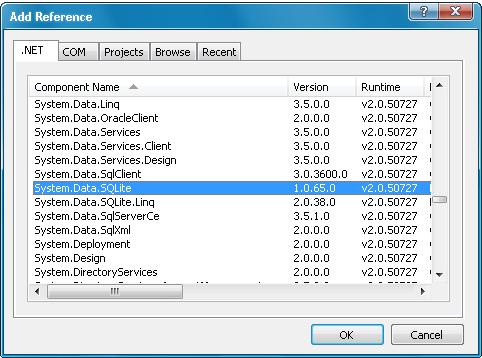|
|
- 值類型
- 引用類型
以C#為例:其值類型為sbyte,byte,char,short,ushort,int,uint,long和ulong,float和double,當(dāng)然還有decimal和bool。而引用類型則是string和object。
我想說(shuō)的
我想說(shuō)的就是――Ref和Out把我弄糊涂的原因是,當(dāng)時(shí)沒(méi)有認(rèn)真的去分析它對(duì)不同類型所做出的不同的動(dòng)作。
對(duì)于值類型。
使用了Ref和Out的效果就幾乎和C中使用了指針變量一樣。它能夠讓你直接對(duì)原數(shù)進(jìn)行操作,而不是對(duì)那個(gè)原數(shù)的Copy進(jìn)行操作。舉個(gè)小例子:
using System;namespace ConsoleApplication4
{
/// <summary>
/// Class1 的摘要說(shuō)明。
/// </summary>
class Class1
{
/// <summary>
/// 應(yīng)用程序的主入口點(diǎn)。
/// </summary>
[STAThread]
static void Main(string[] args)
{
int a = 5;
int b; squareRef(ref a);
squareOut(out b); Console.WriteLine("The a in the Main is: " + a);
Console.WriteLine("The b in the Main is: " + b);
} static void squareRef(ref int x)
{
x = x * x;
Console.WriteLine("The x in the squareRef is: " + x);
} static void squareOut(out int y)
{
y = 10;
y = y * y;
Console.WriteLine("The y in the squareOut is: " + y);
}
}
}
顯示的結(jié)果就是――25 100 25 100。
這樣的話,就達(dá)到了和C中的指針變量一樣的作用。
對(duì)于引用類型。
對(duì)于引用類型就比較難理解了。
先要了解到這一層――就是當(dāng)一個(gè)方法接收到一個(gè)引用類型的變量的時(shí)候,它將獲得這個(gè)引用(Reference)的一個(gè)Copy。由于Ref關(guān)鍵字可以用來(lái)向方法傳遞引用。所以,如果這個(gè)功能被誤用了――比如:當(dāng)一個(gè)如數(shù)組類型的引用對(duì)象用關(guān)鍵字Ref傳遞的時(shí)候,被調(diào)用的方法實(shí)際上已經(jīng)控制了傳遞過(guò)來(lái)的引用本身。這樣將使得被調(diào)用方法能用不同的對(duì)象甚至NULL來(lái)代替調(diào)用者的原始引用!

如圖。內(nèi)存地址為2000的變量arrayA中其實(shí)存放著數(shù)組{1,2,3,4,……}的內(nèi)存起始地址10000。如果一個(gè)方法fun()使用fun( arrayA[] )的話,它將順利的獲得數(shù)據(jù)10000,但這個(gè)10000將放在一個(gè)Copy中,不會(huì)放到內(nèi)存的2000位置。而這個(gè)時(shí)候我們?nèi)绻褂胒un( ref arrayA[] )的話,我們得到的值就是2000啦(也就是說(shuō),被調(diào)用方法能夠修改掉arrayA中的那個(gè)引用,使之不再指向10000,甚至可以用NULL來(lái)代替10000,這樣的話,那個(gè)10000地址中的數(shù)據(jù)可能就要被垃圾回收機(jī)制清理了。)
有個(gè)例子:
using System;
using System.Drawing;
using System.Collections;
using System.ComponentModel;
using System.Windows.Forms;
using System.Data;
namespace RefOut
{
/// <summary>
/// Form1 的摘要說(shuō)明。
/// </summary>
public class Form1 : System.Windows.Forms.Form
{
private System.Windows.Forms.Button button1;
private System.Windows.Forms.Label label1;
/// <summary>
/// 必需的設(shè)計(jì)器變量。
/// </summary>
private System.ComponentModel.Container components = null;
public Form1()
{
//
// Windows 窗體設(shè)計(jì)器支持所必需的
//
InitializeComponent();
//
// TODO: 在 InitializeComponent 調(diào)用后添加任何構(gòu)造函數(shù)代碼
//
}
/// <summary>
/// 清理所有正在使用的資源。
/// </summary>
protected override void Dispose( bool disposing )
{
if( disposing )
{
if (components != null)
{
components.Dispose();
}
}
base.Dispose( disposing );
}
#region Windows 窗體設(shè)計(jì)器生成的代碼
/// <summary>
/// 設(shè)計(jì)器支持所需的方法 - 不要使用代碼編輯器修改
/// 此方法的內(nèi)容。
/// </summary>
private void InitializeComponent()
{
this.button1 = new System.Windows.Forms.Button();
this.label1 = new System.Windows.Forms.Label();
this.SuspendLayout();
//
// button1
//
this.button1.Dock = System.Windows.Forms.DockStyle.Top;
this.button1.Location = new System.Drawing.Point(0, 0);
this.button1.Name = "button1";
this.button1.Size = new System.Drawing.Size(480, 32);
; this.button1.TabIndex = 0;
this.button1.Text = "顯示輸出";
this.button1.Click += new System.EventHandler(this.button1_Click);
//
// label1
//
this.label1.Location = new System.Drawing.Point(8, 48);
this.label1.Name = "label1";
this.label1.Size = new System.Drawing.Size(456, 336);
this.label1.TabIndex = 1;
this.label1.Text = "label1";
//
// Form1
//
this.AutoScaleBaseSize = new System.Drawing.Size(6, 14);
this.ClientSize = new System.Drawing.Size(480, 405);
this.Controls.Add(this.label1);
this.Controls.Add(this.button1);
this.MaximizeBox = false;
this.MinimizeBox = false;
this.Name = "Form1";
this.Text = "Ref & Out";
this.ResumeLayout(false);
}
#endregion
/// <summary>
/// 應(yīng)用程序的主入口點(diǎn)。
/// </summary>
[STAThread]
static void Main()
{
Application.Run(new Form1());
}
private void button1_Click(object sender, System.EventArgs e)
{
int[] firstArray = {1, 2, 3};
int[] firstArrayCopy = firstArray;
this.label1.Text = "Test Passing firstArray reference by value";
this.label1.Text += "/n/nContents of firstArray before calling FirstDouble:/n/t";
for(int i = 0;i < firstArray.Length; i++)
{
this.label1.Text += firstArray[i] + " ";
}
FirstDouble(firstArray);
this.label1.Text += "/n/nContents of firstArray after calling FirstDouble./n/t";
for(int i=0;i<firstArray.Length;i++)
{
this.label1.Text += firstArray[i] + " ";
}
if(firstArray == firstArrayCopy)
this.label1.Text +="/n/nThe references refer to the same array./n";
else
this.label1.Text +="/n/nThe reference refer to different arrays./n";
int[] secondArray = {1, 2, 3};
int[] secondArrayCopy = secondArray;
this.label1.Text += "/nTest passing secondArray reference by reference.";
this.label1.Text += "/n/nContents of secondArray before calling SecondDouble:/n/t";
for(int i=0;i<secondArray.Length; i++)
{
this.label1.Text += secondArray[i] + " ";
}
SecondDouble(ref secondArray);
this.label1.Text +="/n/nContents of secondArray after calling SecondDouble:/n/t";
for(int i=0; i<secondArray.Length;i++)
{
this.label1.Text += secondArray[i] + " ";
}
if(secondArray== secondArrayCopy)
this.label1.Text += "/n/nThe reference refer to the same array.";
else
this.label1.Text += "/n/nThe reference refer to different arrays.";
this.label1.Text += "/n___________________heshi_________________/nsecondarray/n";
for(int i = 0;i<secondArray.Length;i++)
{
this.label1.Text += secondArray[i] + " ";
}
this.label1.Text +="/nsecondarraycopy/n";
for(int i=0;i<secondArrayCopy.Length;i++)
{
this.label1.Text += secondArrayCopy[i] + " ";
}
}
void FirstDouble(int[] array)
{
for(int i = 0;i<array.Length;i++)
array[i] *= 2;
array = new int[] {11, 12, 13};
}
void SecondDouble(ref int[] array)
{
for(int i=0;i<array.Length;i++)
{
array[i] *= 2;
}
array = new int[] {11, 12, 13};
}
}
}
運(yùn)行后的結(jié)果是:
這個(gè)就說(shuō)明了被調(diào)用的程序已經(jīng)改變了原有的Reference。

總結(jié)
總的說(shuō)來(lái),Ref和Out這兩個(gè)關(guān)鍵字都能夠提供相似的功效,其作用也很像C中的指針變量。稍有不同之處是:
- 使用Ref型參數(shù)時(shí),傳入的參數(shù)必須先被初始化。而Out則不需要,對(duì)Out而言,就必須在方法中對(duì)其完成初始化。
- 使用Ref和Out時(shí)都必須注意,在方法的參數(shù)和執(zhí)行方法時(shí),都要加Ref或Out關(guān)鍵字。以滿足匹配。
- Out更適合用在需要Return多個(gè)返回值的地方,而Ref則用在需要被調(diào)用的方法修改調(diào)用者的引用的時(shí)候。
AspNet技術(shù):ASP.NET Ref和Out關(guān)鍵字區(qū)別分析,轉(zhuǎn)載需保留來(lái)源!
鄭重聲明:本文版權(quán)歸原作者所有,轉(zhuǎn)載文章僅為傳播更多信息之目的,如作者信息標(biāo)記有誤,請(qǐng)第一時(shí)間聯(lián)系我們修改或刪除,多謝。



